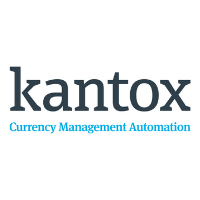Optimising cash and liquidity through currency management
31-10-2022 | treasuryXL | Kantox | LinkedIn |
Can you improve cash and liquidity management with the help of more effective currency management? The answer is: yes, you can! In this article, we see how currency management and cash management are, in effect, joined at the hip.
Five important touchpoints
There are at least five crucial, yet sometimes unduly neglected, touchpoints between FX risk management and cash or liquidity management. Let me briefly set the stage first. Then I will discuss their interactions.
(1) Swapping. Adjusting the company’s hedging position to the cash settlement of the underlying commercial exposure requires a lot of swapping.
(2) Collateral. In a world of shifting interest rates, treasurers need solutions that allow them to optimise collateral management.
(3) Working capital management. Solutions to improve working capital and liquidity are rarely mentioned in the context of FX risk management. Yet, they exist!
(4) Netting. Netting allows companies to generate savings in trading costs and in terms of the cash balances needed to satisfy collateral requirements.
(5) Cash flow forecasting. According to a recent survey by HSBC, more than half of treasurers worldwide say that cash flow forecasting is the most important task in treasury.
How and when currency management meets liquidity management
Take the case of a hedging program designed to protect the FX budget rate. It includes stop-loss orders to protect the FX rate used in pricing or a ‘worst-case scenario’ FX rate. It can also include profit-taking orders to lock in more favourable exchange rates.
As long as the stop-loss orders are not hit, hedge execution is postponed. This means that the cash required for collateral requirements can be set aside at a later date. It also means that treasurers have more time to improve their cash flow forecasts.
And it’s not over yet! Hedging incoming firm sales/purchase orders or invoices leads to very precise currency hedging. This means that purchasing managers are in a position to buy confidently in the currency of their suppliers. These, in turn, will be more inclined to grant extended paying terms.
With the perfect end-to-end traceability that comes with automated programs, managers can safely aggregate exposures without fear of losing the benefits of data granularity. This can create more netting opportunities, again reducing the need to set aside cash in terms of collateral.
Finally, swapping can be easily automated.
And voilà!
Feedback effects
That’s how effective FX risk management ends up improving liquidity management. Note that the process feeds on itself. Let me give you an example. Because swap automation releases valuable treasury resources, treasurers can take advantage of the benefits of using more currencies. Automated swap execution, therefore, improves not only the cash management part of the FX workflow but also —indirectly— working capital management.
That’s what I call a win-win situation!










